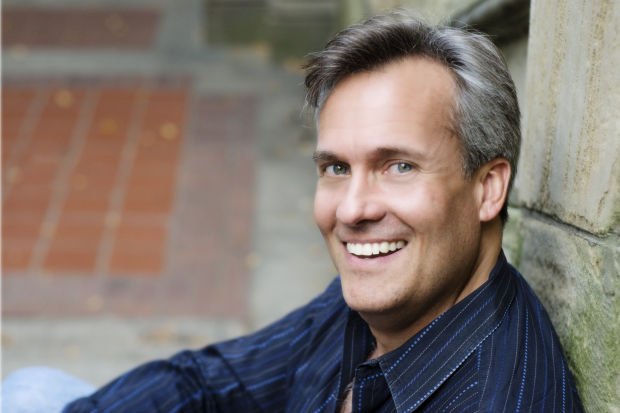The Tucson Symphony Orchestra this weekend might break its own record for the number of performers packed onto the Tucson Music Hall stage when the orchestra mounts Berlioz’s mammoth concert piece “The Damnation of Faust.”
The two performances are part of the closing weekend of the second annual Tucson Desert Song Festival.
There will be 116 choristers — 77 from the TSO Chorus and another 39 from the UA’s Arizona Choir — four guest soloists and 91 instrumentalists. That’s 212 people on the stage when you include conductor George Hanson.
“This may be as many people as we’ve ever had on stage before,” said Hanson, the orchestra’s music director who predicted that the number will eclipse the double chorus that performed in Mahler’s Symphony No. 2 in April 2009 or the expanded TSO Chorus used for Carl Orff’s “Carmina Burana” in 2007.
And it will make Tucson history; no professional orchestra — and, as far as Hanson knows, no other Tucson organization — has ever before attempted to mount Berlioz’s “Faust,” which does not come as much of a surprise to tenor William Burden, who will sing the role of Faust.
“It does take a pretty big commitment on the part of a presenting company to do something as big as this in concert,” said Burden, a critically acclaimed tenor who has sung the title role in Charles Gounod’s French opera “Faust” but has never sung the Berlioz concert version. “This is two concerts, and it is a big undertaking for two concerts in a short span of time.”
Berlioz finished “Faust” in 1845, 16 years after he first started working on the free-flowing oratorio based on Goethe’s dramatic poem “Faust.” The work’s premiere in late 1846 was not a critical success and a third performance of it was canceled for lack of interest. It wasn’t until 1877 in Paris that the piece got its critical due and another 19 years before it found an audience in the United States, when the New York Metropolitan Opera premiered it in concert in 1896. The Met staged it as an opera a decade later, in 1906, then shelved it until 1996, when the renowned company revisited “Faust” with a concert at Carnegie Hall and then a staged production in 2008.
The Berlioz is “expensive, long and hard to market,” explained Hanson. “That’s the problem. The great thing about it is it’s absolutely gorgeous.”
Hanson said it is rare to see an orchestra the size of Tucson’s take on the “Faust” mainly because of the number of musicians and vocalists it requires.
“The problem is that you have to start out hiring singers that are unarguably world class, and that’s not something that an orchestra at our budget level can do,” said Hanson, who conducted Berlioz’s “Faust” with his former orchestra in Germany years ago. “You have to have a very particular physical type of person, and they have to have a specific type of training and experience. And there frankly aren’t a lot of people in the world who can do it.”
Burden agrees.
“Berlioz was a meticulous orchestral composer. He writes hugely sweeping, emotional music, and that requires a certain level of experience almost to endure as a performer,” he said. “(The orchestra) will be pushed to the edges of technical ability. Berlioz really calls upon everyone to head toward the extreme because everything gets huge to him, whether it’s incredibly quiet and painstakingly intimate or huge, huge moments. … Those moments become gigantic both for the singers and the players.”





